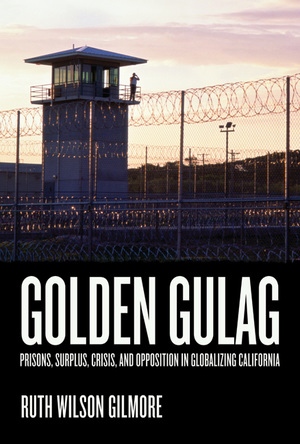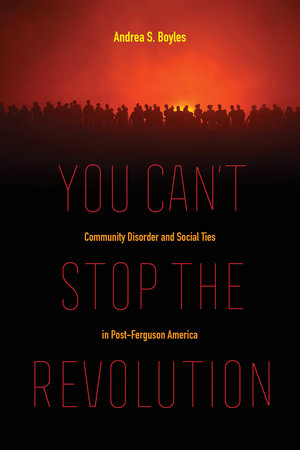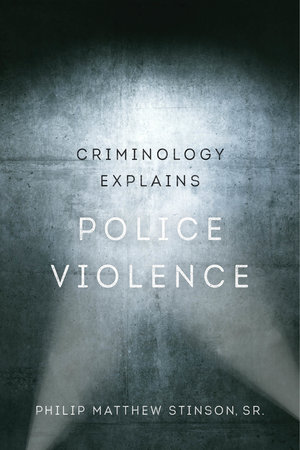From the massive prison system of California, to an abolitionist sanctuary movement, and the reimagining of how to provide safety in Puerto Rico, the following recommended titles offer in-depth research on alternatives to policing and incarceration.

Golden Gulag
Prisons, Surplus, Crisis, and Opposition in Globalizing California
by Ruth Wilson Gilmore
Since 1980, the number of people in U.S. prisons has increased more than 450%. Despite a crime rate that has been falling steadily for decades, California has led the way in this explosion, with what a state analyst called “the biggest prison building project in the history of the world.” Golden Gulag provides the first detailed explanation for that buildup by looking at how political and economic forces, ranging from global to local, conjoined to produce the prison boom.
In an informed and impassioned account, Ruth Wilson Gilmore examines this issue through statewide, rural, and urban perspectives to explain how the expansion developed from surpluses of finance capital, labor, land, and state capacity. Detailing crises that hit California’s economy with particular ferocity, she argues that defeats of radical struggles, weakening of labor, and shifting patterns of capital investment have been key conditions for prison growth. The results—a vast and expensive prison system, a huge number of incarcerated young people of color, and the increase in punitive justice such as the “three strikes” law—pose profound and troubling questions for the future of California, the United States, and the world.
You Can’t Stop the Revolution
Community Disorder and Social Ties in Post-Ferguson America
by Andrea S. Boyles
You Can’t Stop the Revolution is a vivid participant ethnography conducted from inside of Ferguson protests as the Black Lives Matter movement catapulted onto the global stage. Sociologist Andrea S. Boyles offers an everyday montage of protests, social ties, and empowerment that coalesced to safeguard black lives while igniting unprecedented twenty-first-century resistance. Focusing on neighborhood crime prevention and contentious black citizen–police interactions in the context of preserving black lives, this book examines how black citizens work to combat disorder, crime, and police conflict. You Can’t Stop the Revolution serves as a reminder that community empowerment is still possible in neighborhoods experiencing police brutality and interpersonal violence.
Bans, Walls, Raids, Sanctuary
Understanding U.S. Immigration for the Twenty-First Century
by A. Naomi Paik
Days after taking the White House, Donald Trump signed three executive orders—these authorized the Muslim Ban, the border wall, and ICE raids. These orders would define his administration’s approach toward noncitizens. An essential primer on how we got here, Bans, Walls, Raids, Sanctuary shows that such barriers to immigration are embedded in the very foundation of the United States. A. Naomi Paik reveals that the forty-fifth president’s xenophobic, racist, ableist, patriarchal ascendancy is no aberration, but the consequence of two centuries of U.S. political, economic, and social culture. She deftly demonstrates that attacks against migrants are tightly bound to assaults against women, people of color, workers, ill and disabled people, and queer and gender nonconforming people. Against this history of barriers and assaults, Bans, Walls, Raids, Sanctuary mounts a rallying cry for a broad-based, abolitionist sanctuary movement for all.
Policing Life and Death
Race, Violence, and Resistance in Puerto Rico
by Marisol LeBrón
In her exciting new book, Marisol LeBrón traces the rise of punitive governance in Puerto Rico over the course of the twentieth century and up to the present. Punitive governance emerged as a way for the Puerto Rican state to manage the deep and ongoing crises stemming from the archipelago’s incorporation into the United States as a colonial territory. A structuring component of everyday life for many Puerto Ricans, police power has reinforced social inequality and worsened conditions of vulnerability in marginalized communities.
This book provides powerful examples of how Puerto Ricans negotiate and resist their subjection to increased levels of segregation, criminalization, discrimination, and harm. Policing Life and Death shows how Puerto Ricans are actively rejecting punitive solutions and working toward alternative understandings of safety and a more just future.
Pacifying the Homeland
Intelligence Fusion and Mass Supervision
by Brendan McQuade
The United States has poured over a billion dollars into a network of interagency intelligence centers called “fusion centers.” These centers were ostensibly set up to prevent terrorism, but politicians, the press, and policy advocates have criticized them for failing on this account. So why do these security systems persist? Pacifying the Homeland travels inside the secret world of intelligence fusion, looks beyond the apparent failure of fusion centers, and reveals a broader shift away from mass incarceration and toward a more surveillance- and police-intensive system of social regulation.
Provided with unprecedented access to domestic intelligence centers, Brendan McQuade uncovers how the institutionalization of intelligence fusion enables decarceration without fully addressing the underlying social problems at the root of mass incarceration. The result is a startling analysis that contributes to the debates on surveillance, mass incarceration, and policing and challenges readers to see surveillance, policing, mass incarceration, and the security state in an entirely new light.
Criminology Explains Police Violence
by Philip Matthew Stinson Sr
Criminology Explains Police Violence offers a concise and targeted overview of criminological theory applied to the phenomenon of police violence. In this engaging and accessible book, Philip M. Stinson, Sr. highlights the similarities and differences among criminological theories, and provides linkages across explanatory levels and across time and geography to explain police violence.
This book is appropriate as a resource in criminology, policing, and criminal justice special topic courses, as well as a variety of violence and police courses such as policing, policing administration, police-community relations, police misconduct, and violence in society. Stinson uses examples from his own research to explore police violence, acknowledging the difficulty in studying the topic because violence is often seen as a normal part of policing.




